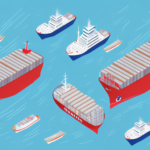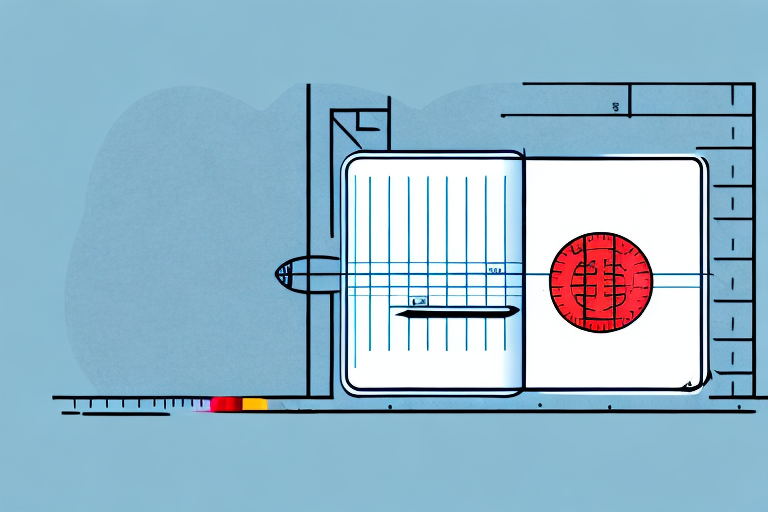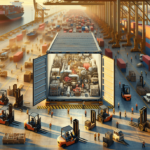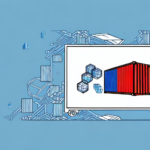Maximizing Efficiency in the Supply Chain with TEU (Twenty-foot Equivalent Unit) Solutions
In the world of supply chain management, maximizing efficiency is crucial to success. One effective strategy to achieve this is through the use of TEU solutions, or Twenty-foot Equivalent Units. TEU solutions refer to the standard unit of measurement used to quantify containerized cargo. This article delves into the concept of TEU in supply chain management, the advantages of utilizing TEU solutions in logistics and shipping operations, the different types and sizes of TEU containers, and best practices for implementing TEU solutions in your supply chain strategy.
Understanding the Concept of TEU in Supply Chain Management
TEU is a standardized unit of measurement used to determine the cargo-carrying capacity of container ships and terminals. The size and weight of shipping containers are standardized, with the most commonly used size being 20 feet in length and 8 feet in width. The term 'twenty-foot equivalent unit' originates from this standard container size. A single standard 20-foot container equals one TEU, while a 40-foot container equals two TEUs.
According to the International Chamber of Shipping, the global fleet capacity is often measured in millions of TEUs, highlighting its significance in the maritime industry.
TEU is pivotal in supply chain management as it aids in determining the capacity of container ships and terminals. This information is essential for logistics companies as it assists in planning and optimizing their operations. By understanding the TEU capacity of a container ship or terminal, logistics companies can determine the number of containers that can be transported or stored, facilitating better shipment planning and inventory management.
Moreover, TEU serves as a benchmark for measuring the performance of container shipping companies. The number of TEUs transported by a company is frequently used as an indicator of its market share and competitiveness, a metric important for investors and stakeholders evaluating the financial health and growth potential of shipping enterprises.
Advantages of Using TEU Solutions in Logistics and Shipping Operations
The adoption of TEU solutions in logistics and shipping operations offers several key benefits:
- Increased Efficiency: TEU solutions enable seamless movement of cargo across different transportation modes, such as from a container ship to a truck or train.
- Standardization: Establishing TEU as a common unit of measurement for containerized cargo standardizes international trade, reducing time and costs associated with handling and shipping goods across various transportation modes and countries.
- Risk Reduction: Containers are designed to protect goods from environmental elements and prevent shifting during transit, minimizing the risk of cargo damage.
- Enhanced Security: Containers can be sealed and tracked, which helps prevent theft and tampering, crucial for high-value or sensitive goods like electronics or pharmaceuticals.
- Flexibility in Storage and Handling: Containers can be stacked and stored in diverse locations, such as ports, warehouses, or on trucks, optimizing space utilization.
- Environmental Benefits: TEU solutions reduce the need for multiple packaging materials and containers are easily recyclable, contributing to sustainability.
According to the United Nations Conference on Trade and Development (UNCTAD), container shipping accounts for approximately 80% of global trade by volume, underscoring the importance of TEU solutions in international commerce.
How TEU Solutions Can Help to Streamline Supply Chain Processes
The integration of TEU solutions can streamline supply chain processes in multiple ways:
- Efficient Loading and Unloading: Containers can be loaded and unloaded swiftly, reducing time and costs associated with cargo handling and transportation.
- Optimized Space Utilization: Containers can be stacked and stored more efficiently, leading to reduced warehouse and storage costs.
- Improved Supply Chain Visibility: TEU solutions enhance the ability to track the movement of goods from origin to destination, increasing transparency and accountability.
- Damage Reduction: Containers are built to withstand harsh conditions and rough handling, protecting fragile or sensitive goods during transit.
- Enhanced Speed and Reliability: Standardized containers and equipment simplify shipment coordination and management, minimizing delays and ensuring timely delivery of goods.
Implementing TEU solutions can lead to a 15-20% reduction in logistics costs, as reported by the McKinsey Global Institute.
TEU Containers: Types, Sizes, and Features for Efficient Cargo Handling
TEU containers come in various types and sizes to accommodate different cargo requirements:
- Dry Containers: The most widely used type, designed to carry general cargo.
- Refrigerated Containers (Reefers): Used to transport perishable goods such as fruits, vegetables, and pharmaceuticals.
- Tank Containers: Designed for transporting liquid or gaseous cargo.
- Open-top Containers: Suitable for larger cargo that cannot be loaded through standard container doors.
- Flat Rack Containers: Ideal for heavy or oversized cargo that requires loading from the sides.
Additional features of TEU containers include vents, drainage holes, and robust locking mechanisms to facilitate efficient and secure cargo handling. Innovations such as smart containers with IoT technology are enhancing real-time tracking and monitoring capabilities.
The standardization of TEU containers has revolutionized the shipping industry by providing a consistent and efficient method for transporting goods globally. This standardization has significantly reduced cargo handling time and costs, while also minimizing the risk of damage during transportation.
TEU containers are versatile and not limited to maritime transport; they are also integral to rail and road transportation. The use of TEU containers in intermodal transportation has further enhanced cargo handling efficiency and reduced the environmental impact of transportation. Additionally, the proliferation of containerization terminals, specialized facilities for handling and storing TEU containers, has streamlined logistics operations.
TEU Solutions for Cost Reduction and Increased Productivity in the Supply Chain
Implementing TEU solutions can lead to substantial cost reductions and productivity gains in the supply chain:
- Handling and Shipping Costs: Standardizing the unit of measurement for containerized cargo minimizes the time and expenses associated with handling and shipping goods.
- Space Optimization: Efficient space utilization reduces storage costs and increases productivity by enabling more efficient loading and unloading of cargo.
- Supply Chain Visibility: Enhanced tracking of goods movement reduces the risk of cargo loss or damage, leading to cost savings.
- Environmental Sustainability: Less handling and packaging reduce waste and lower carbon emissions. Intermodal transportation facilitated by TEU solutions utilizes more efficient transportation modes like rail and waterways, further diminishing the carbon footprint.
Adopting TEU solutions not only improves the financial performance of companies but also promotes responsible and sustainable business practices.
Challenges and Limitations of Implementing TEU Solutions in the Supply Chain
While TEU solutions offer numerous benefits, their implementation can present several challenges and limitations:
- Investment in Specialized Equipment and Infrastructure: Implementing TEU solutions may require significant investment in cranes, container yards, and other specialized infrastructure.
- Standardization Constraints: The standardized nature of TEU containers may limit flexibility in transporting oversized or irregularly shaped cargo, necessitating specialized containers or handling procedures.
- Initial Transportation Costs: Although TEU containers can enhance efficiency and reduce handling costs, the initial investment in equipment and infrastructure can be substantial.
- Compatibility Issues: TEU standardization may not be suitable for all shipping routes or transportation modes, potentially leading to additional cargo handling and transfer costs.
Addressing these challenges requires careful planning, investment, and collaboration with logistics and shipping partners to ensure seamless integration of TEU solutions into existing supply chain operations.
Best Practices for Implementing TEU Solutions in Your Supply Chain Management Strategy
Successfully implementing TEU solutions in your supply chain management strategy involves adhering to several best practices:
- Comprehensive Supply Chain Analysis: Conduct a thorough analysis of your supply chain processes to identify areas where TEU solutions can enhance efficiency and reduce costs.
- Investment in Necessary Infrastructure and Equipment: Allocate resources to acquire the required infrastructure, such as container yards and cranes, to support TEU implementation.
- Establish Clear Handling Guidelines: Develop and enforce clear procedures for handling and transporting TEU containers to ensure consistency and efficiency.
- Collaborate with Shipping and Logistics Partners: Work closely with partners to integrate TEU solutions effectively into your supply chain operations.
- Monitor and Evaluate Performance: Regularly track key performance indicators (KPIs) such as container turnaround time and transportation costs to assess the effectiveness of TEU solutions and make necessary adjustments.
- Stay Updated with Technological Advancements: Keep abreast of the latest TEU technologies and industry trends to continuously improve your supply chain operations and maintain a competitive edge.
Implementing these best practices can facilitate the effective integration of TEU solutions, leading to enhanced supply chain performance and sustainability.
Case Studies: Successful Implementation of TEU Solutions in Logistics and Shipping Companies
Several logistics and shipping companies have effectively implemented TEU solutions, resulting in improved operational efficiency and cost savings:
Maersk Line
Maersk Line, the world's largest container shipping company, leverages TEU solutions to optimize space utilization and enhance supply chain efficiency. By standardizing container sizes and investing in specialized infrastructure, Maersk Line has successfully reduced operational costs and improved visibility into the movement of goods. This strategic implementation has enabled Maersk Line to maintain its competitive position in the global shipping industry.
DHL Global Forwarding
DHL Global Forwarding has adopted TEU solutions to streamline its supply chain operations, resulting in reduced transit times and increased productivity. By integrating TEU standardization into its logistics processes, DHL has enhanced its ability to manage and track shipments efficiently, thereby improving overall service delivery and customer satisfaction.
MSC (Mediterranean Shipping Company)
MSC has implemented TEU solutions to enhance its intermodal transportation capabilities. By utilizing standardized TEU containers across different transportation modes, MSC has improved cargo handling efficiency and reduced environmental impact through optimized routing and reduced carbon emissions.
These case studies exemplify how effective implementation of TEU solutions can lead to significant operational improvements and competitive advantages in the logistics and shipping sectors.
Future Trends and Innovation in TEU Solutions for the Supply Chain Industry
The future of TEU solutions in the supply chain industry is poised for significant advancements driven by technological innovations and evolving market demands:
- Automation and Robotics: The integration of automation and robotics in container handling and management is expected to enhance efficiency and reduce human error.
- Internet of Things (IoT) Integration: Smart containers equipped with IoT devices will provide real-time tracking and monitoring of cargo conditions, improving supply chain visibility and responsiveness.
- Advanced Tracking Systems: Enhanced tracking systems using blockchain technology will increase transparency and security in container movements, reducing fraud and improving data integrity.
- Eco-friendly Containers: Development of environmentally sustainable containers made from recyclable materials and designed for lower carbon footprints will align with global sustainability goals.
- Customized Containers: Innovation in container design to accommodate specialized cargo, such as hazardous materials or oversized goods, will expand the applicability of TEU solutions.
- AI-driven Optimization: Artificial Intelligence (AI) will play a role in optimizing container loading patterns, routing, and predictive maintenance, further enhancing supply chain efficiency.
These trends indicate a continued evolution of TEU solutions, with a focus on leveraging technology to drive efficiency, sustainability, and adaptability in the supply chain industry.
In Conclusion
The utilization of TEU solutions in the supply chain industry offers numerous benefits, including increased efficiency, cost reduction, and enhanced supply chain visibility. However, the implementation of TEU solutions also presents challenges, such as the need for specialized infrastructure and potential limitations in cargo flexibility. To successfully integrate TEU solutions, companies should adhere to best practices and collaborate closely with logistics and shipping partners. With ongoing advancements in technology and innovation, the adoption of TEU solutions is expected to continue growing, driving further improvements in supply chain performance and sustainability.






















